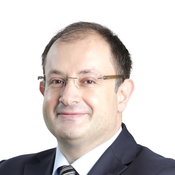General seminar | 18 October 2021
Perolab (2201) + Zoom

Semiconductor nanocrystals have attracted great interest for color conversion and enrichment in quality lighting and displays. Optical properties of these solution processed nanostructures are conveniently controlled by tailoring their size, shape and composition in an effort to realize high performance light generation and lasing. These colloids span different types and heterostructures of semiconductors in the forms of quantum dots and rods, most recently extending to the latest sub family of nanocrystals, the colloidal quantum wells (CQWs). In this talk, we will introduce the emerging field of semiconductor nanocrystal optoelectronics, with most recent examples of their photonic structures and optoelectronic devices employing such atomically flat, tightly confined, quasi 2 dimensional CQWs, also popularly nick named ‘nanoplatelets’. Among various extraordinary features of theirs, we will show that these CQWs enable record high optical gain coefficients [1] and can achieve gain thresholds at the level of sub single exciton population per CQW on the average [2], empowered by carefully engineering their heterostructure [3]. Next, we will present a new, powerful, large-area self assembly tool for orientation controlling of these nanoplatelets [4], which provides us with the ability to tune and master their excitonic properties in their ensemble as well as the level of achievable energy transfer among them and with other nearby species. Using three dimensional constructs of face down self assembled slabs of CQWs with monolayer precision, we will demonstrate ultrathin optical gain media and lasers of these oriented CQW assemblies [5]. Finally, we will show record high efficiency colloidal LEDs using CQWs employed as the electrically driven active emitter layer [6] and record low-threshold solution lasers using the same CQWs employed as the optically pumped fluidic gain medium [7]. Given their current accelerating progress, these solution processed quantum well materials hold great promise to challenge their epitaxial thin film counterparts in semiconductor optoelectronics in the near future.
Main paper/arXiv, related to the seminar, and other references
[1] B. Guzelturk et al., HVD, Nano Letters 19, 277 (2019)
[2] N. Taghipour et al., HVD, Nature Comm 11, 3305 (2020)
[3] Y. Altıntas et al., HVD, ACS Nano 13, 10662 (2019)
[4] O. Erdem et al., HVD, Nano Letters 19, 4297 (2019)
[5] O. Erdem et al., HVD, Nano Letters 20, 6459 (2020)
[6] B. Liu et al., HVD, Advanced Materials 32, 1905824 (2020)
[7] J. Maskoun et al., HVD, Advanced Materials 33, 2007131 (2021)
